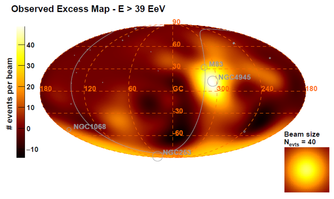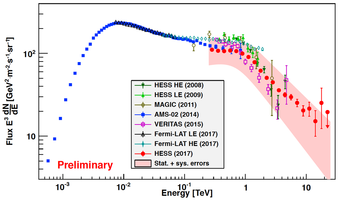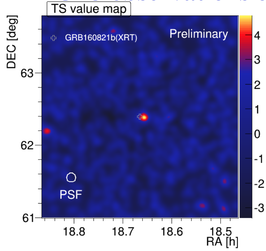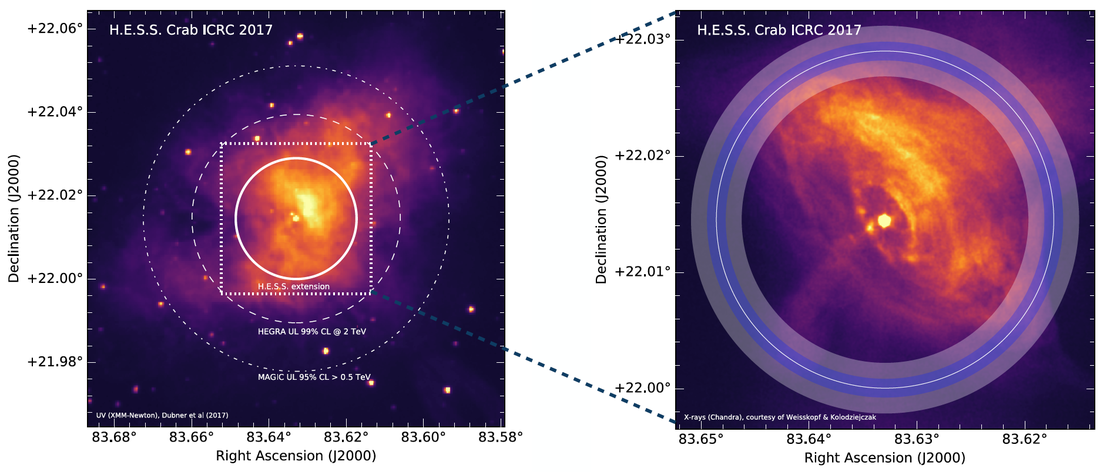|
Over the last week the 35th International Cosmic Ray Conference has been held in Busan (South Korea). It is the largest and best-known meeting on astroparticle physics and is being held every two years. This year about 850 participants from more than 50 countries made the trip to Busan, making it a perfect place to meet many colleagues and friends and learn about the most recent results from all major astroparticle observatories. This year I was invited to give a plenary talk summarizing searches for transient phenomena with high-energy gamma-ray observatories. My talk is here... A personal selection of interesting results: Among the most striking new results is an indication for a small scale anisotropy in the arrival directions of ultra-high energy cosmic rays (UHECR) detected by the Pierre Auger Observatory. In addition to the confirmation of the previously announced dipole structure, they found a correlation with nearby starburst galaxies (i.e. galaxies with a high level of star formation) at angular scales around 13deg. The significance reached about 4sigma (i.e. the probability for a background fluctuation is less then one in 25.000). Details are given here. Somehow everybody fears that this hint might have a similar fate as the previous claim (see Cosmic Rays for more on this). Hopefully these doubts will be proven unsubstantiated by future observations and we will look back at Busan as the place where UHECR astronomy started. ;-)  The H.E.S.S. collaboration reported an updated measurement of the energy spectrum of cosmic electrons with unprecedented precision. It seems like the shape of this spectrum and especially the pronounced and very sharp break around 950GeV will give theorists some sleepless nights. It might be related to the set in of cooling effects in the interstellar magnetic fields, but one would naturally expect a much more smoother turn-over. See here for details. H.E.S.S. also reported on improvements on the event reconstruction and analysis techniques. The most important new technique is probably the introduction of time dependent Monte Carlo simulations which reproduce the actual data taking conditions much more precisely and thus lower the systematic uncertainties. Coincidentally the introduced scheme is very similar to the one I introduced for the Pierre Auger Collaboration during my PhD thesis and which is still used to measure the energy spectrum of cosmic rays. The first impressive application of the new MC technique is the measurement of the Crab nebula at TeV energies, roughly matching the one seen in X-rays. See here for the talk presenting the analysis.  The MAGIC collaboration showed a hint for the long-awaited detection of a gamma-ray burst (GRB) with their Imaging Air Cherenkov Telescope system. The burst itself (GRB 160821B) is one of the brightest short GRBs seen by the GBM instrument onboard the Fermi satellite and MAGIC could react to the incoming alert message within only 24 seconds. Unfortunately the weather conditions at that moment were pretty unfavorable with clouds, high moonlight illuminations and high zenith angles leading to a rather high energy threshold around 500GeV. The observed hotspot has a statistical significance of (only) about 3sigma. The talk discussing the observations is here.
0 Comments
|
AuthorMyself ;-) Archives
January 2024
Categories
All
|




 RSS Feed
RSS Feed